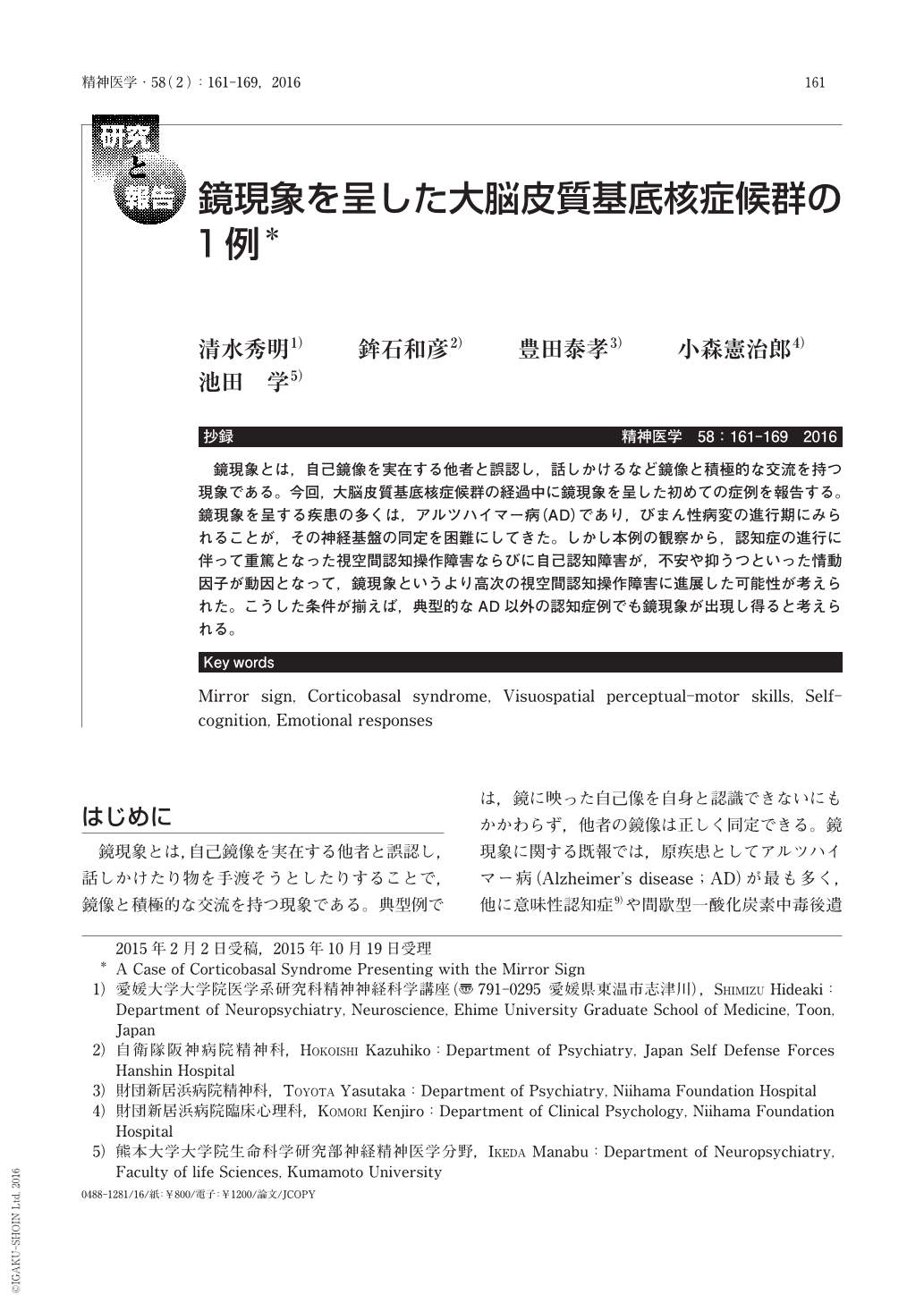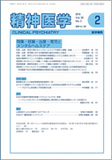Japanese
English
- 有料閲覧
- Abstract 文献概要
- 1ページ目 Look Inside
- 参考文献 Reference
抄録
鏡現象とは,自己鏡像を実在する他者と誤認し,話しかけるなど鏡像と積極的な交流を持つ現象である。今回,大脳皮質基底核症候群の経過中に鏡現象を呈した初めての症例を報告する。鏡現象を呈する疾患の多くは,アルツハイマー病(AD)であり,びまん性病変の進行期にみられることが,その神経基盤の同定を困難にしてきた。しかし本例の観察から,認知症の進行に伴って重篤となった視空間認知操作障害ならびに自己認知障害が,不安や抑うつといった情動因子が動因となって,鏡現象というより高次の視空間認知操作障害に進展した可能性が考えられた。こうした条件が揃えば,典型的なAD以外の認知症例でも鏡現象が出現し得ると考えられる。
The mirror sign is a phenomenon in which individuals mistake their reflection in a mirror for another person, and then speak to or abuse the reflection. However, they recognize other people correctly in the mirror. The mirror sign is usually reported in patients with Alzheimer's disease (AD). The neural basis of the mirror sign is unclear because it usually present during advanced stages of AD, when there is diffuse cortical atrophy. Here, we report for the first time, a 53-year-old female patient with corticobasal syndrome presenting with the mirror sign. Although the patient could recognize her image in a hand mirror, she mistook her reflection in a wall mirror for someone else. She showed markedly impaired visuospatial perceptual motor skills, including orienting apraxia of her body and constructional disability. Recognition of oneself in a wall mirror, when the reflection appears abruptly, requires higher visuospatial perceptual-motor skills than does recognizing oneself in a hand mirror, which is habitually used in daily living. Recent imaging studies of nerve function suggest that self-cognition correlates with right cerebral hemisphere function, and with the functional synchronization system of cortical midline structures, called the default mode network. This case suggests that dysfunction of cerebral regions associated with self-cognition facilitates the development of the mirror sign. However, the neural basis of the mirror sign cannot be simply explained by damage to the cerebral regions that form functional networks, because it only appears in 5.46% of patients with AD. Both psychosocial and biological factors play an important role in the appearance of psychiatric symptoms associated with dementia. Therefore, our neuropsychological findings in this case suggest that marked impairments of visuospatial perceptual-motor skills and self-cognition progress to development of the mirror sign by triggering emotional responses such as anxiety and depression.

Copyright © 2016, Igaku-Shoin Ltd. All rights reserved.


